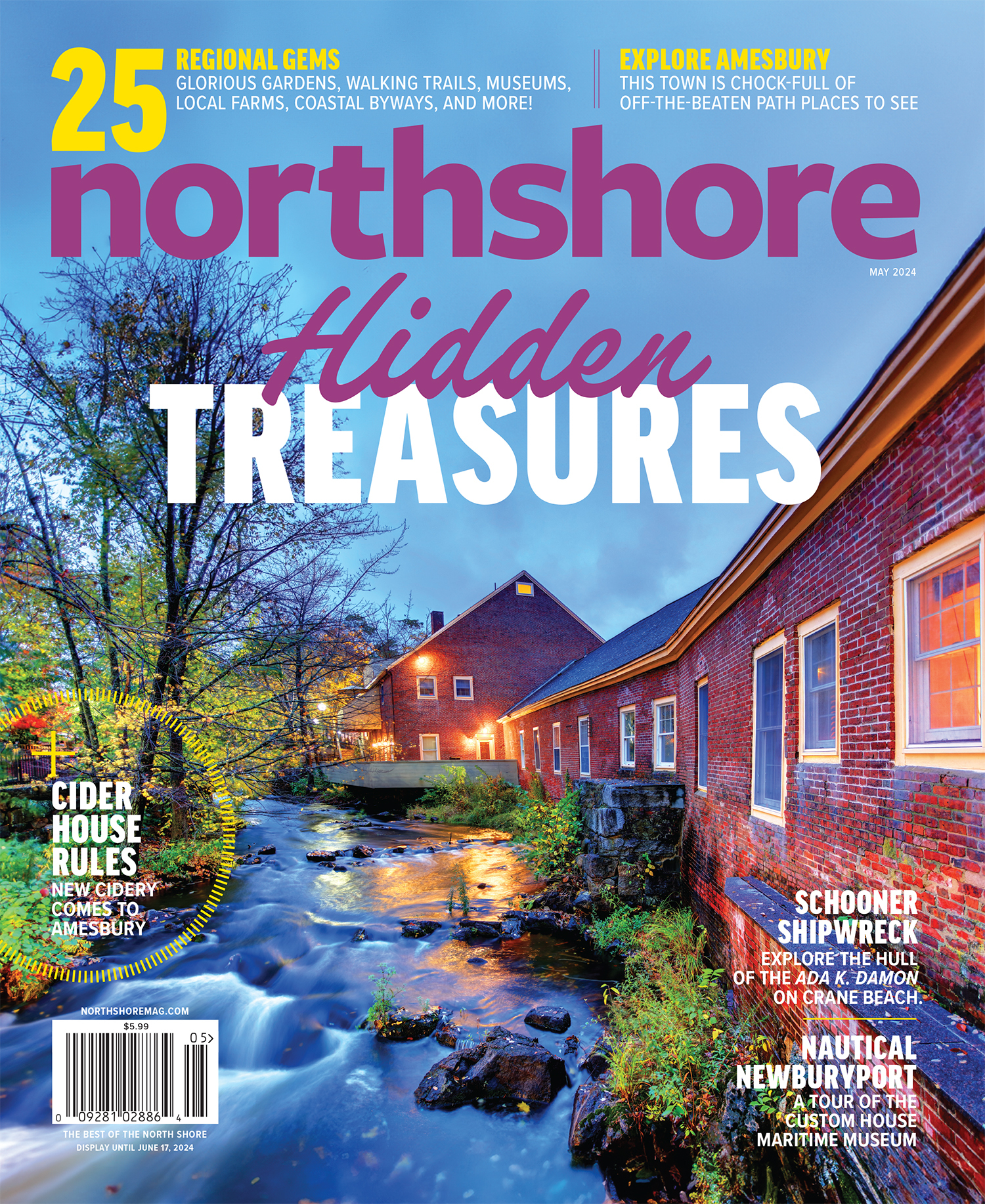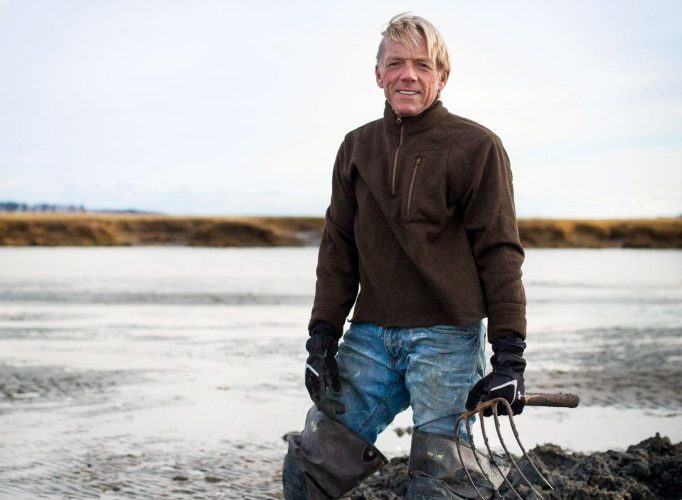John Grundstrom in the Rowley flats.
Small yet significant, the clam has long been a symbol of life on the North Shore.
From food to commerce, the mighty clam is a cultural mainstay across New England. Tourists flock to famous fried clam shacks and descend upon sandy beaches at low tide to dig for their dinner. This abundant shellfish doesn’t have the prestige of an oyster or universal appeal of shrimp, but it holds a special place in the hearts of many right here on the North Shore.
Jack Grundstrom and his son John are third- and fourth-generation clammers in Rowley. Reflecting on his decades spent bent over the mud flats, Jack says the business hasn’t changed much. “My father was doing the exact same thing in 1930 that John does in 2013,” he says. Though conditions and prices may vary from year to year, the process is the same whether you’re a professional digger or a novice: Find an approved mud flat to dig at low tide, look for tiny air holes in the sand, use a clam fork to carefully rake around the spot, and then dig with your hands until you can carefully extract the clam.
The experience can take seconds for a seasoned digger and several minutes for a novice. There are no short cuts, no “honey holes” of clustered clams easily plucked by the handful—it’s one clam at a time. Throughout the blistering heat of summer and icy chill of winter, many in the region still make a living following the tide charts day after day. The Grundstroms are passionate advocates of the clam trade, teaching both young and old about this lost art. “If you didn’t go clamming, you didn’t eat,” Jack recalls of his childhood.
Clams as Food
Joseph Carlin, a food historian, clam expert, and North Shore resident, has been studying clams for years, amassing a collection of documents relating to clam consumption and folklore. He says clams suffered an image problem for the first part of the 19th century. “They were used for bait and pig food, lived in mud, and were harvested for trade by Native Americans. The clam carried a lot of baggage, so people weren’t quick to embrace it,” he says.
Change came after the Civil War, when trains and ferries carried tourists to the many newly built resort hotels lining the shores from Long Island to Maine. Searching for clams in the sand became a fun activity for families, and soon clams made their way to the kitchen, into chowders, fried, and as part of the quintessential clambake.
Carlin says the rise in automobile travel and road infrastructure led to the establishment of clam shacks. These weather-beaten structures were located on the side of the road for convenience, luring people to stop in for “dressed clams” (shucked) and other snacks. Clam shacks sprung up in the Joppa Flats area of Newburyport, in Ipswich along “Clamshell Alley” (now known as Water Street), and along Route 22, the most famous of them all, Woodman’s.
The Legacy of the Fried Clam
Still a family-owned establishment, Woodman’s has been recognized as a part of American gastronomic history. No one knew a good business opportunity better than Lawrence “Chubby” Woodman. Though he is credited with inventing the fried clam, this is not true; the first known mention of frying clams is documented in an American cookbook dating from 1852, and on the North Shore, fried Ipswich clams were listed on a menu from the reopening of the Plum Island Hotel in 1886.
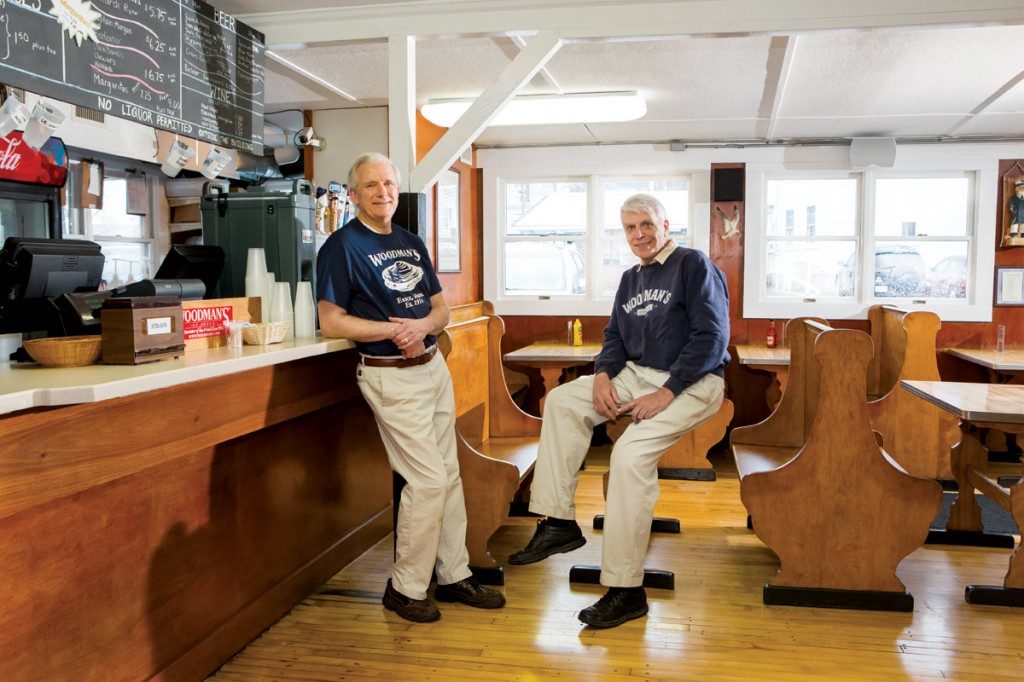
Steve and Leonard Woodman
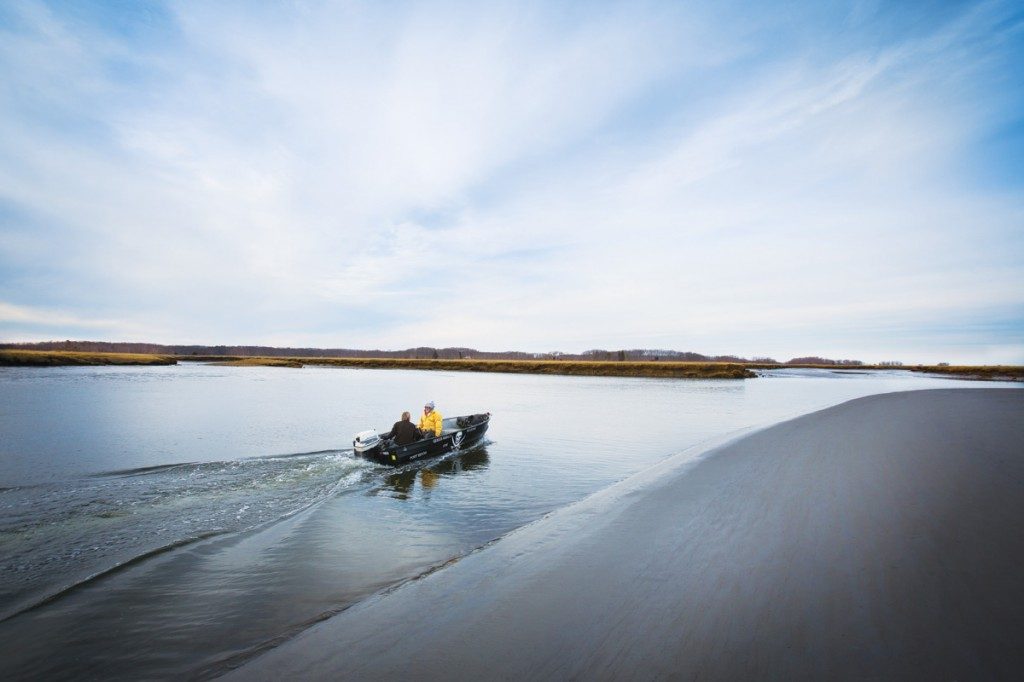 Boating to the flats
Boating to the flats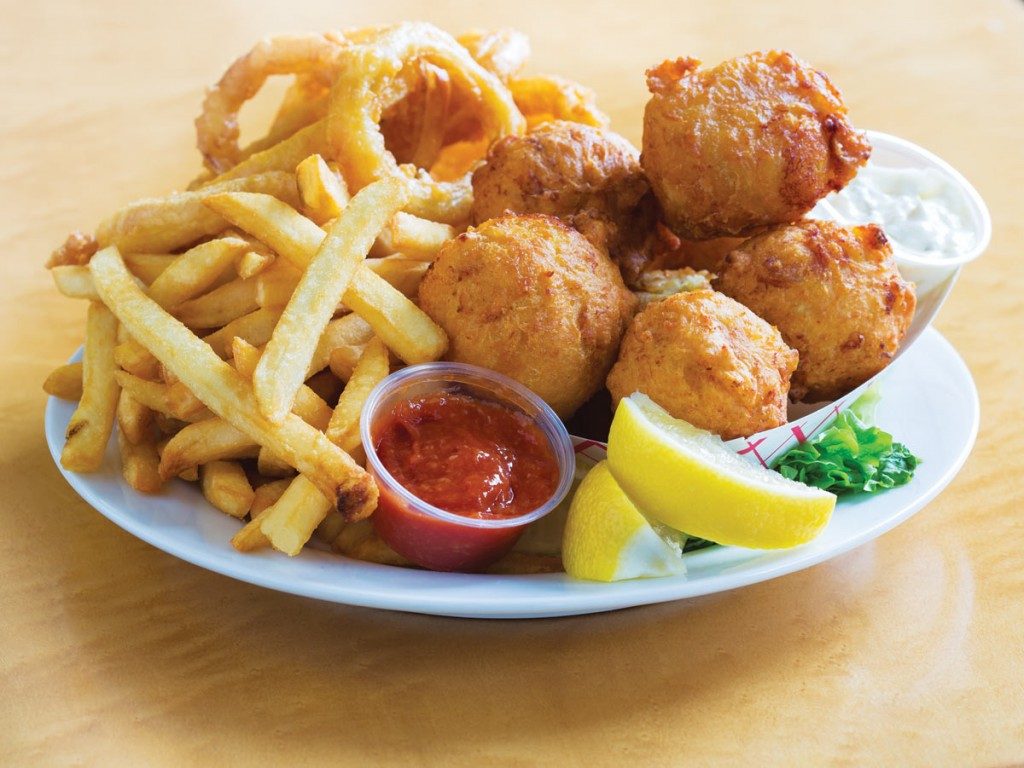 Woodman’s Clamcakes
Woodman’s Clamcakes- Lard for frying
- 1 c. drained/strained minced clams
- 3 tbsp. clam juice
- 1 egg
- 1 c. all-purpose flour
- 2 tsp. baking powder
- 1/2 tsp. salt
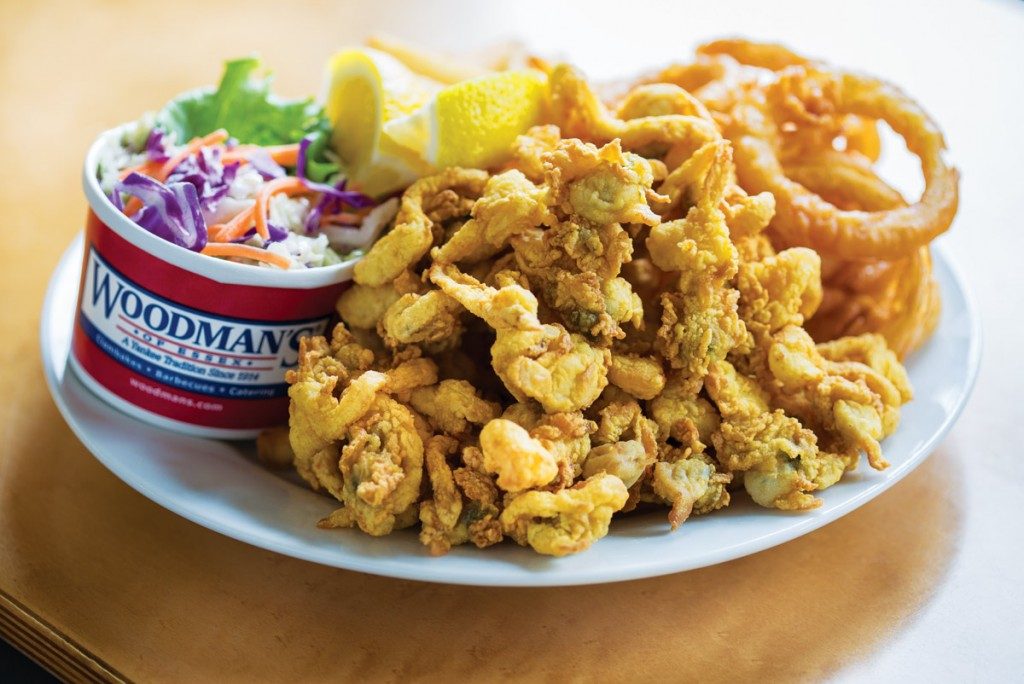 Woodman’s Fried Clams
Woodman’s Fried Clams- Fry Daddy (or other electric home fryer), cast iron skillet, or heavy fry pan
- Bowl containing can of evaporated milk
- Strainer for straining off excess evaporated milk
- Cookie sheet lined with corn flour
- Enough lard, vegetable oil, or Crisco that when melted gives you 2-3 inches of liquid in your pan. If using an electric fryer, fill as directed by manufacturer.
- Temperature 350°F
- Corn flour
- Evaporated milk
